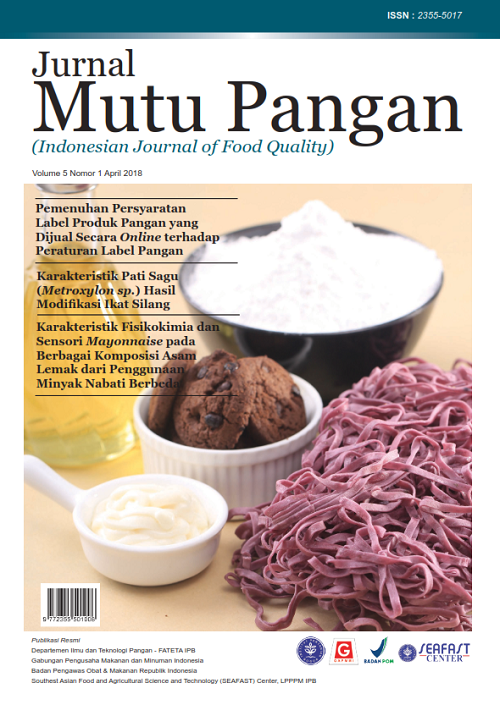Evaluasi Perbedaan Varietas Kacang Kedelai terhadap Mutu Produk Susu Kedelai
Abstract
In Indonesia, soybean (Glycine max L.) is used as main ingredients in the processing of soya milk. Soya milk is produced by soaking of soybeans, wet milling, filtering the soy slurry. Different soybean varieties may affect to the chemical composition and sensory of soya milk, such as protein content, total solid and beany flavor attribute. This research objective was to study the effect of different soybean varieties obtained from American Soybean Association (ASA), International Marketing (New IP, IP 1 year old of storage, US, Argentina and Indonesia) to soya milk’s quality (chemical and sensory properties). Soybeans contained 8.67-9.95% of water, 5.15-5.36% of ash, 30.33-36.49% of protein and 15.91-25.11% of fat. The water content of soya milk ranged from 94.06 to 97.03%, while the protein content reached up to 3.00%. The highest yield, total solid and total solid recovery soya milk production was resulted from IP soybean that reaches up to 760%, 5.94% and 49.62%. The highest fat content of soya milk was 1.94%. The highest protein recovery of soya milk was resulted from Argentine soybean which was equal to 66.99%. The best variety of soybean for soymilk making is US soybean especially due to its lowest characteristics beany flavor as compared to that of soymilk from other varieties of soybean tested. Soymilk from US soybean also provide highest viscosity among all soymilk tested. However, US soybean provide the less yield of soymilk as compared to that of IP soybean 1 year old (IP soybean after one year storage).

















